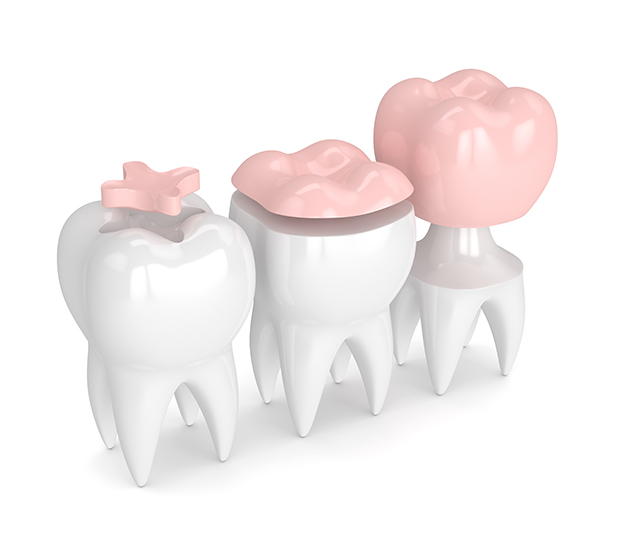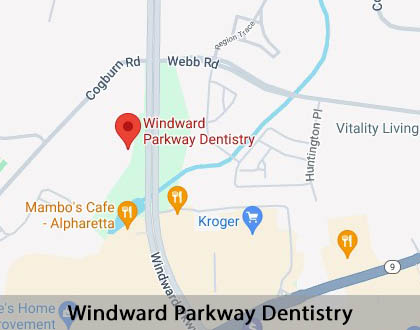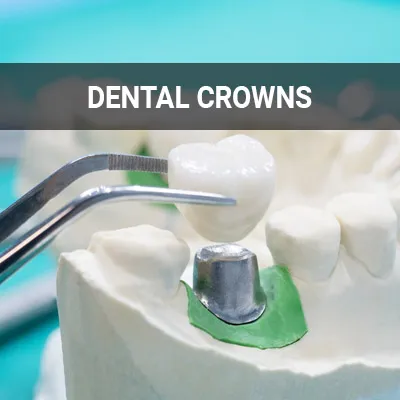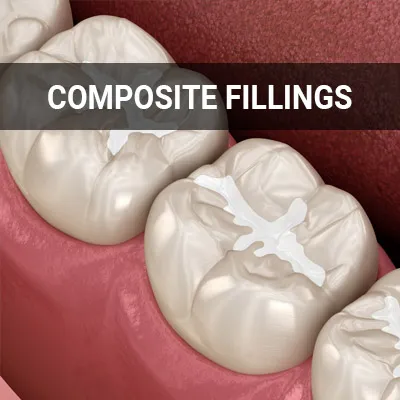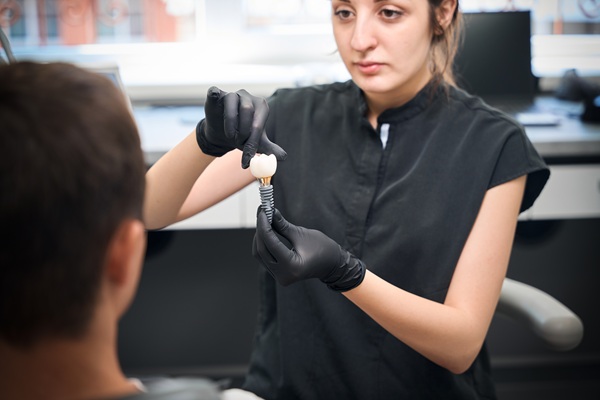Dental Inlays and Onlays Alpharetta, GA
If you are concerned about the appearance of your old fillings, new tooth-colored treatments can restore and transform your teeth. Silver and gold fillings are a thing of the past as cosmetic treatments such as inlays and onlays are a new and effective treatment. Inlays and onlays are similar to traditional fillings as they fit inside the tooth where a cavity once was and seal it. The signifying difference is that they come in a variety of tooth-colored materials for an enhanced, more uniform smile.
As most inlay and onlay treatments replace old fillings, the cavity has already been removed and filled. This makes treatment easier, faster, and generally pain-free. Inlays and onlays provide a more sustainable treatment and a natural-looking smile.
Inlays and onlays are available at Windward Parkway Dentistry in Alpharetta and the surrounding area. Our staff can help you determine whether this treatment is right for you. Call us at (770) 814-6224 to schedule an appointment.
What are Inlays and Onlays?
Inlays
Traditionally, inlays replace a small amount of tooth structure left by a cavity, just as fillings do. They filled and sealed the tooth but were made only of gold. Inlays today are made of tooth-colored material such as ceramic, porcelain, or a specialized dental composite.
The inlay consists of the tooth-colored material and bonding, a clear fluid material, to attach the inlay to the tooth. As explained by the American College of Prosthodontists, "Using a clear fluid version of this material to seal the exposed surfaces of the teeth decreases sensitivity to temperature changes and certain types of foods." The bonding material is also tooth-colored and may help improve the color and appearance of stained or discolored teeth.
Onlays
Onlays are similar to inlays in that they fill a missing hole caused by a cavity, but onlays extend onto the chewing surface of a tooth to replace one or more cusps. Traditionally, they were also only made of gold, but tooth-colored onlays have made an appearance in dentistry. An onlay is considered a more effective option for patients with large cavities or the decayed area expands over the top of the tooth.
The process of inlays and onlays both involve bonding material to attach and seal it to the tooth. In both treatments, the bonding material may actually improve the strength of the tooth.
“An onlay is considered a more effective option for patients who have large cavities or the decayed area expands over the top of the tooth.”
Inlay or Filling
Inlays are a cosmetic treatment that can replace old fillings. Increasingly, patients have had the option to choose between a filling or inlay when treating a cavity. We use an impression of the cavity in question to ensure the inlay is the exact size and shape, as opposed to other options that may weaken the tooth. In this way, the cemented inlay strengthens the tooth rather than weakening it.
As inlays become more popular because of their appearance, fillings are hardly ever requested. However, a dentist may resort to a filling for cases in which the patient is allergic to the inlay material used. In many cases, special dental material can be used as an inlay to provide the patient with the highest level of comfort.
“Inlays are formulated using an impression of the cavity and are fabricated to the exact size and shape of the cavity as opposed to being filled in.”
Onlay vs. Crown
Compared to a crown, an onlay is a less aggressive type of restoration and allows for more of your tooth's structure to be preserved. If your tooth is relatively intact but requires some of the edges to be replaced, an onlay is a good choice. If your tooth has extensive damage or decay, you will likely need a crown. Our dentist will evaluate your situation and recommended which treatment option would be best.
“Compared to a crown, an onlay is a less aggressive type of restoration and allows for more of your tooth’s structure to be preserved.”
Check out what others are saying about our dental services on Yelp: Dental Inlays and Onlays in Alpharetta, GA
Benefits of Inlays and Onlays
Inlays
The key benefits of inlays lie in their durability and strength. They are intended to protect and seal the tooth from further damage using cemented material custom-fit to each tooth. The sealed inlays also protect the tooth from air and food particles from entering the tooth, which causes a sensitive sensation. Before an inlay treatment, the dentist removes all bacteria from inside the tooth and throughout the hole, attaining a higher level of oral hygiene. Inlays are more stable and stay in your tooth for much longer than a filling with proper oral care.
Onlays
Onlays have much of the same benefits as inlays. An added benefit to onlays is they can save much of the patient's tooth structure and provide additional strength and support for the affected tooth. Crowns require treatment and typically involve removing the entire tooth, or at minimum, much of the tooth structure. Onlays are also custom-fit for each patient and use stain-resistant material, making them last much longer without affecting appearance.
“Before an inlay treatment, the dentist removes all bacteria from inside the tooth and throughout the hole, attaining a higher level of oral hygiene.”
Questions Answered on This Page
Q. What is the difference between an inlay and an onlay?
Q. Should I get an inlay or a filling?
Q. What are the key benefits of inlays and onlays?
Q. What is the difference onlay vs. crown?
Q. What is the difference between inlays, onlays, and veneers?
People Also Ask
Q. What are composite fillings?
Q. How can cosmetic dentistry restore teeth?
Q. How do lifestyle choices affect dental health?
Q. How can dental cosmetics improve oral health?
Inlays, Onlays, and Veneers
While they may seem similar, veneers, inlays, and onlays are not the same. Onlays and inlays are used to fill and protect damage to the chewing service of the tooth, while veneers are used to cover the front of the tooth in areas that show when you smile. Veneers are not typically used to address tooth decay and are used for more cosmetic reasons.
A veneer is a great option for people who want to correct cosmetic flaws or treat a stained tooth, chipped, or crooked. However, veneers do not provide the structural support or protection of an inlay or onlay. To properly address decay or other damage, an inlay or onlay is the preferred choice.
“While they may seem similar, veneers, inlays, and onlays are not the same.”
Frequently Asked Questions about Inlays and Onlays
Q. Does my insurance cover inlays and onlays?
A. Dental insurance coverage varies from person to person. You will want to reach out to your insurance provider directly to find out if they cover inlays and onlays. Our staff will help you determine any out-of-pocket costs.
Q. What is the difference between inlays and onlays?
A. An inlay is meant to fit in the center of a back tooth and covers only a portion of the chewing surface. An onlay will cover more of the tooth, such as the small points or ridges along the sides. Both inlays and onlays are made from impressions of the area so they are a perfect fit.
Q. Can I get an inlay or onlay in one visit?
A. Since inlays and onlays are made off-site, they require two office visits to be put into place. Once the decay and damaged material are removed, our dentist will make an impression of the site to be filled. A temporary covering will protect your tooth between visits.
Q. What can I expect after getting an inlay or onlay?
A. After the procedure, there is usually a little discomfort, but most patients can adapt to the new chewing surface quickly. Sometimes the tissues around the area worked on are sore or the tooth is sensitive to hot and cold. These issues should fix themselves in one or two days.
Dental Terminology
Learn More About Inlays and Onlays Today
If you are considering replacing your old fillings and crowns or want to schedule a consultation appointment, call us at 770-814-6224 to speak to Windward Parkway Dentistry. By taking full-mouth X-rays, a custom treatment plan will help to meet your needs.
Helpful Related Links
- American Dental Association (ADA). Glossary of Dental Clinical Terms. 2024
- American Academy of Cosmetic Dentistry® (AACD). Home Page. 2024
- WebMD. WebMD’s Oral Care Guide. 2024
About our business and website security
- We accept the following payment methods: Cash, Check, Discover, MasterCard, and Visa
- We serve patients from the following counties: Fulton County
- We serve patients from the following cities: Alpharetta, Bethany Crossing, Herring Township, and Milton
- Norton Safe Web. View Details
- Trend Micro Site Safety Center. View Details
Back to top of Dental Inlays and Onlays
